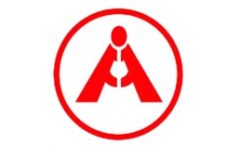Keep these best practices in mind so you can set your new work from home team members up for success and utilise the software solutions listed above for an even more streamlined process. Their offerings include an engaging eLearning platform and thousands of courses on project management, HR, leadership, and more. To see the best results from your onboarding software, you need to choose the right one. Pairing new hires with existing employees also gives you someone to check in with to see how the new hire is doing. Even if you don’t have time to monitor their progress as closely as you’d like, you can still keep an eye on things by communicating with the mentor. Even if you can only spare 10 minutes per day, you’re still showing them that you want to see what they’re doing and giving them a chance to ask questions, express concerns, or just get to know you better.
- Engaged employees are passionate about their role within the organization and know that their contributions are valued.
- It is a good idea to share a list of the different identification and qualification certificates that may be required by the company’s HR.
- At minimum, you should collect an employee photo, along with name, role, and a short bio.
However, creating a smooth remote onboarding experience is not as easy as the traditional onboarding process. Remote onboarding requires more documentation and is a more detail-oriented process than the traditional one. A slight lack of engagement can put the new joiner in confusion and can lead to mismanagement.
FAQs about Onboarding Remotely Best Practices
If you provide new team members with hardware, include some branded company swag (think stickers or a t-shirt) in the welcome package. Make sure any hardware shipments arrive in time so the remote employee is ready for onboarding. Also consider asking for feedback on the onboarding process from managers, buddies, and other team members that are working with the new hire. This way, you can improve your processes and make onboarding easier for the entire team.
Try incorporating the welcome video into one of the early stages of the onboarding process. Better yet, make the majority of your training done by videos via training webinars where you can release pre-recorded or live training for your remote employees. It can also be beneficial to include a Q&A section designed to familiarize the employee with the company’s culture and important processes.
Set up a buddy system
This gives them access to someone who can always answer questions and make sure they fit well into their new remote teams. Those who may be used to working around others may start to feel lonely in their remote working role, too. This can lead to them feeling isolated, which may have a negative effect on building a strong connection with your company. Having a mentor may help in such situations, as could having regular video calls for team members to get to know each other. Think about all of the small personal touches employees would usually experience in the office and bring them to life.
The key to efficiently onboarding remote employees is to create a detailed onboarding plan. This plan should cover all aspects of the onboarding process but most importantly, include milestones that can be used remote onboarding best practices to measure how an employee is progressing through the process. Having an effective employee onboarding process builds loyalty and engagement, improves productivity, and delivers a positive work experience.
Make sure the new employee has the right gear for onboarding
Webonboarding is designed to provide a more efficient, faster onboarding process. Host virtual happy hours or team lunches so people can chat and get to know each other in a more relaxed environment. You can also create Slack channels or group chats dedicated to casual “water cooler” conversations. Remote employees can’t just walk down the hall to the IT department and ask for something they’re missing. Help them start their new job on the right foot by ensuring they have all their equipment in advance. However, they should get opportunities to see how their colleagues work, what a typical day looks like, and what they’ll be expected to do once they’ve finished training.
